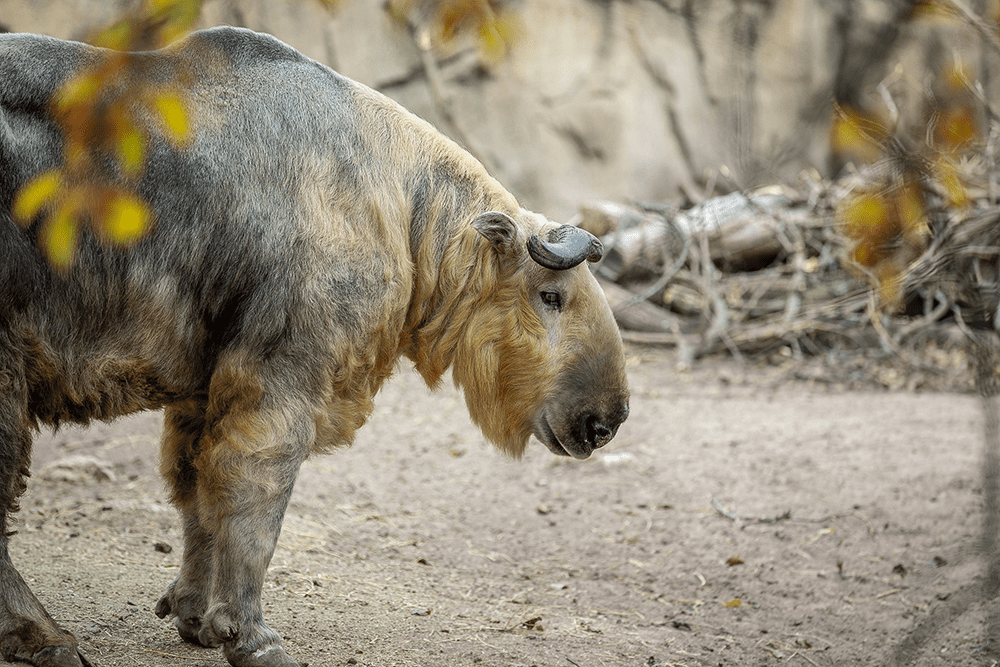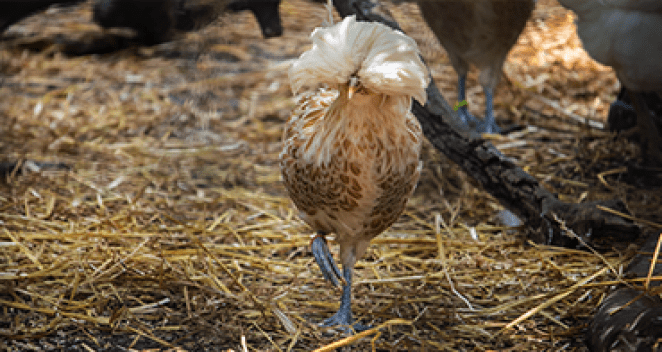How does an animal tell you how they’re feeling or what they’re experiencing? Science. More specifically, through the Animal Welfare Science Program, a formalized initiative to better understand each individual in the zoo’s care.
The dedicated Animal Care staff at the zoo work 365 days a year to feed specialized diets, create dynamic habitats, and provide appropriate companionship for social species, among many other tenets of care. Expert care represents every facet of what the Animal Care staff provide to our animals on a daily basis. But what about the things that aren’t easily measured? How do the animals actually experience their day? How does Animal Care staff know if the hens are comfortable and content in their new coop or what motivates the fennec fox to engage in foraging behaviors? Ultimately—how does Animal Care ensure the zoo is creating an environment in which individual animals can flourish? That is exactly the question the zoo’s Animal Welfare Science Program scientists have been tasked with answering.
Animal welfare is a holistic concept. Specifically, the zoo defines animal welfare as an animal’s collective physical, mental, and emotional state over a period of time that is measured on a continuum from great to poor. If defining welfare wasn’t challenging enough, measuring it has provided even more obstacles, namely because animals can’t tell us how they’re feeling. Katie Cronin, Ph.D., the zoo’s senior animal welfare scientist, and her team have been working within Animal Care to integrate the knowledge from the zoo’s many years of caring and advocating for animals, and create an overarching program dedicated to making data-driven decisions to help inform how we care for species and promote positive welfare for every individual at the zoo.
“It’s important to emphasize that the zoo is already a leader, promoting great welfare for the nearly 200 species here,” says Cronin. “We believe in the work happening here, and we also believe that we can do more. The Animal Welfare Science Program was created to explore just that.”
An interest in animal welfare is not new to the zoo—promoting positive welfare has been a goal for several years with research-driven habitat design and the innovation of ZooMonitor, a Lincoln Park Zoo-created behavioral monitoring app. What is new is the formalization of the Animal Welfare Science Program, which enables the zoo to regularly make decisions about how to care for animals based on information the animals themselves provide. Scientists work alongside curators and keepers to determine both the best way to ask the animals how they are doing, and how to interpret their responses to inform decisions about care.
When boiled down to its simplest form the program has three steps: evaluate, enhance, repeat. In addition to monitoring the welfare of individual animals around the clock, the program is designed to improve welfare by providing feedback—direct from the animals—about different care strategies and habitat modifications. Program scientists also understand each animal as an individual that may respond differently to the same stimuli.

“One of the most important things is that we are striving for continual improvement. This evaluate-and-enhance cycle is a critical component of how we do that,” says Cronin. “Promoting great welfare is not an easy task. As an institution, we are trying to ensure each individual animal thrives. We are also developing new and objective ways to measure animal welfare given that it is multi-faceted and the field of zoo animal welfare science is young. It’s a challenge—but a rewarding one.”
Theoretically, the program sounds great, but how is it applied to the work happening at the zoo? Prior to the launch of Malott Family Penguin Encounters—a first of a kind experience for Lincoln Park Zoo—the Animal Care and Learning departments knew they wanted to evaluate the experience for both penguins and humans alike. The Animal Welfare Science Program set up a study using the ZooMonitor app to observe how the penguins’ welfare was impacted by Encounters, and to inform any changes that would enhance welfare.
Scientists compared penguin behavior on days with and without Penguin Encounters to understand how offering this experience impacted the animals. They tracked which penguins participated as well as how the birds behaved during the experience. Overall, Penguin Encounters had a neutral or even positive effect on welfare—the penguins didn’t show any behavioral signs of stress, and those who chose to participate spent more time playing, one indicator of good welfare. Using the heat map capabilities of ZooMonitor, scientists also concluded that the participating penguins were comfortable around the Encounter guests; the penguins used the space near the guests just as much as other areas. In fact, they often waddled right up to participants!
The study also revealed important individual differences between penguins. While some penguins were avid participants in Encounters, others chose to opt out and continue with their colony activities.
The scientists are confident the ability for the penguins to choose whether or not to participate was likely key to the overall positive impact of the program on penguin welfare.
The set up at Lincoln Park Zoo has additional features that scientists hypothesize enhance welfare of the penguins, for example the penguins are not transported out of their habitats (the encounter space is built into the habitat at Robert and Mayari Pritzker Penguin Cove), and they aren’t having any physical contact with the visitors.
“All of these choices were made intentionally by the zoo in advance based on available research and seem to have set the stage for great welfare,” says Cronin. Moving forward, the zoo knows more about the individual differences in the penguins’ interest and comfort that can be used to inform care and program design. The zoo can also use these findings to enhance future programming with other species.
“At first, the thought was to focus on the needs of the individual animals here at Lincoln Park Zoo and maybe a few years down the road conduct studies that would be helpful to other zoos and advance zoo welfare science more broadly,” says Cronin. “But what has happened is the studies we’re conducting, such as with Penguin Encounters, have been shared among other Association of Zoos and Aquariums-accredited institutions and has sparked interest in this new approach to encounters. We’ve even had other institutions come and visit Robert and Mayari Pritzker Penguin Cove to learn about what is working well here and use this information to inform their upcoming renovations.”
The Penguin Encounter data from the Animal Welfare Science Program is currently being overlaid with research from the Learning department to understand how being in the same space as the penguins impacts learning outcomes and empathy for animals among human participants. The Encounters have been evaluated and the results will fuel the next steps, or the ‘enhance’ part of the cycle.
The evaluate-and-enhance cycle doesn’t just apply to the research but also to the program and its approach. While the Animal Welfare Science Program is set within the Animal Care department, its scientists work closely with nearly every team across the zoo to understand the big picture. The program utilizes motion-activated field cameras and acoustic monitors from the Urban Wildlife Institute, works with the Lester E. Fisher Center for the Study and Conservation of Apes on welfare assessment and evaluation tools, overlays behavioral data with hormone and stress levels gathered by the Davee Center for Epidemiology and Endocrinology, works closely with the Behavioral and Enrichment Husbandry manager to understand how enrichment impacts space use and, of course, entrusts ZooMonitor volunteers to collect data across zoo grounds daily. It takes a village!
With thousands of animals in the zoo’s care, it will take time to best understand each individual’s experiences, but that hasn’t slowed down the Animal Welfare Science Program! Since its inception in early 2018, the team has already made significant improvements to animal welfare by working with other Animal Care staff around the zoo to create more natural light cycles for nocturnal animals at Regenstein Small Mammal-Reptile House, generate a new measurement for feather condition and establish welfare baselines for the chickens at Farm-in-the-Zoo, increase habitat usage and foraging of the pygmy hippos at Regenstein African Journey, track the impacts of cognition studies on troop aggression at Regenstein Macaque Forest, and provide shade structure recommendations for the takins at Camel & Zebra, among dozens of other projects.
“The story is never over. We can always do more,” says Cronin.

